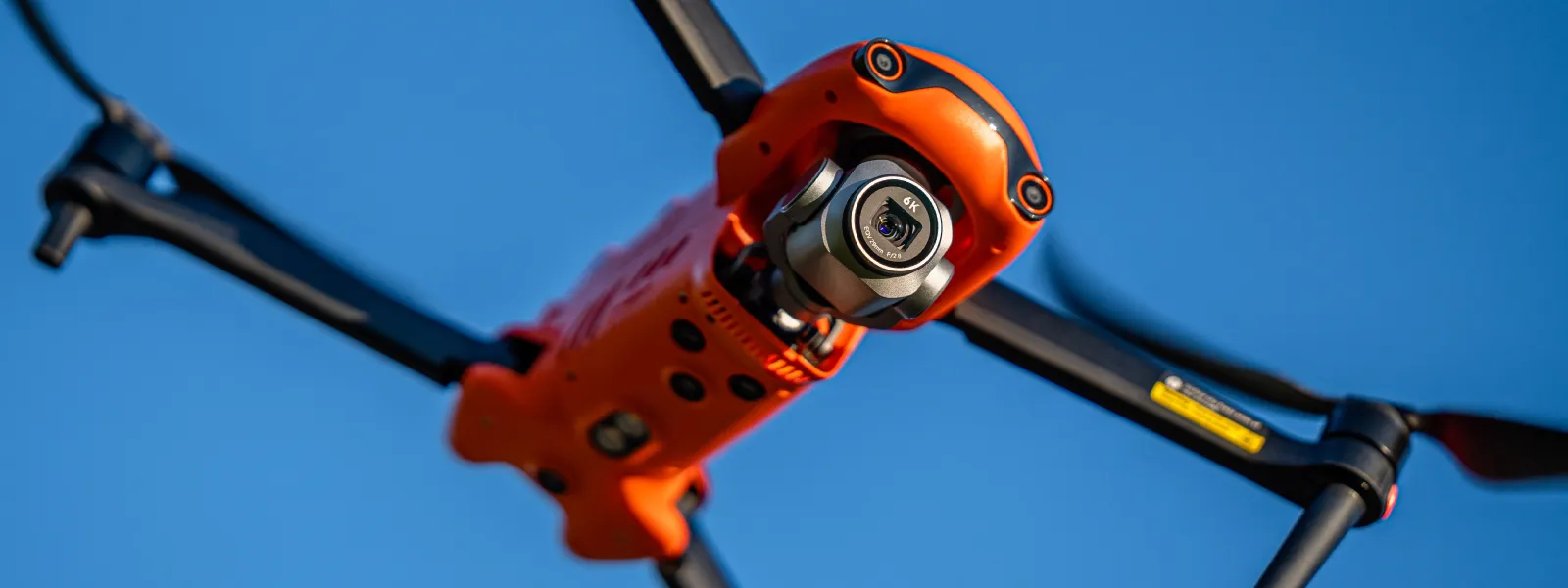Swarm drones represent a significant advancement in unmanned aerial systems (UAS), leveraging the power of multiple autonomous drones working in coordination. This innovative technology offers numerous applications across various industries, from military and security to agriculture and disaster response.
If you are interested in autonomous drone swarm technology, read this blog in detail. This article comprehensively covers the pros, cons, applications, and challenges of drone swarm technology.
What Are Swarm Drones?
Swarm drones are groups of autonomous drones that operate together as a coordinated unit. These drones communicate with each other and make collective decisions, allowing them to perform complex tasks that a single drone would struggle to accomplish.
UAV drone swarms typically have one or more human operators controlling the drones individually. Decentralized control is somewhere in between, with human operators sending controls to the drones, and the drones also sending signals to each other. This allows the task to be completed with little to no further human intervention.
Key Features of Drone Swarms
- Autonomy: Swarm drones operate with minimal human intervention, using advanced algorithms for decision making and coordination.
- Real-time communication: Drones in the group communicate in real time, sharing data and instructions to maintain coordinated flight patterns and mission execution.
- Scalability: The swarm system can be easily expanded by adding more drones, thereby enhancing its ability to cover larger areas or perform more complex tasks.
- Redundancy: The loss of one drone will not affect the mission, as other drones can take over its role, providing robustness and reliability.
The collaborative operation of drone swarms undoubtedly provides sufficient preparation for faster and better completion of drone missions. Especially when drones perform large-scale mapping, patrol, search and rescue tasks.
Who is a swarm drone?
Semi-autonomous or fully autonomous drones rely on internal microcomputer programming tasks to achieve collaborative operations, improving mission efficiency for multiple industry applications.
Autel Robotics first proposed A-Mesh technology For EVO MAX series drones, which can organize multiple drones for joint operations at the same time, and only one drone operator and one drone remote control are needed to control up to five drones at the same time.
Positive applications of drone swarms:
- Patrol and defense: Drone swarms are extremely valuable in police patrol law enforcement, large-scale border patrols, secretly monitoring the movements of suspects, and discovering activity tracks.
- Agriculture: Sowing, identifying disease outbreaks through large-scale monitoring, and deploying crop treatments.
- Emergency management: Finding missing persons or providing emergency care and supplies during natural disasters.
- Entertainment: Drone light shows are alternative entertainment performances using drone swarms instead of fireworks. This can reduce pollution, fire risks, and interference with animals and humans.
- Commercial and industrial uses: Drone swarms can be used in a variety of commercial and industrial applications, including infrastructure inspections and delivery services.
Drone technology can replace a lot of labor costs in traditional operations, optimize workflows, and improve work efficiency. Drone swarms are also widely used in police departments and corporate security environments.
What are the advantages of drone swarms?
- Scalability: Drone swarms can vary in size, ranging from just a few drones to hundreds or even thousands of units.
- Autonomy: Drone swarms are designed to operate autonomously, without direct human control.
- Redundancy: In a swarm, individual drones can compensate for the loss or failure of others.
- Versatility: Applicable in various fields, from military to agriculture, enhancing operational capabilities.
- Safety: Reduces the need for human presence in hazardous environments.
What are the disadvantages of drone swarm?
- Complexity: Operating a drone swarm can be complex, requiring advanced planning and coordination to ensure that the drones do not collide or interfere with each other.
- Regulation and Airspace Management: Navigating the regulatory landscape and managing airspace to prevent collisions is complex.
- Security: Protecting swarm drones from hack ing and electronic warfare is crucial.
- Technical Limitations: Battery life, payload capacity, and environmental factors can limit performance.
Conclusion
Swarm drones represent a transformative technology with the potential to revolutionize various industries. By leveraging the collective power of multiple autonomous drones, they offer unparalleled efficiency, scalability, and versatility. As technology advances, the applications and capabilities of swarm drones will continue to expand, providing innovative solutions to complex challenges.
